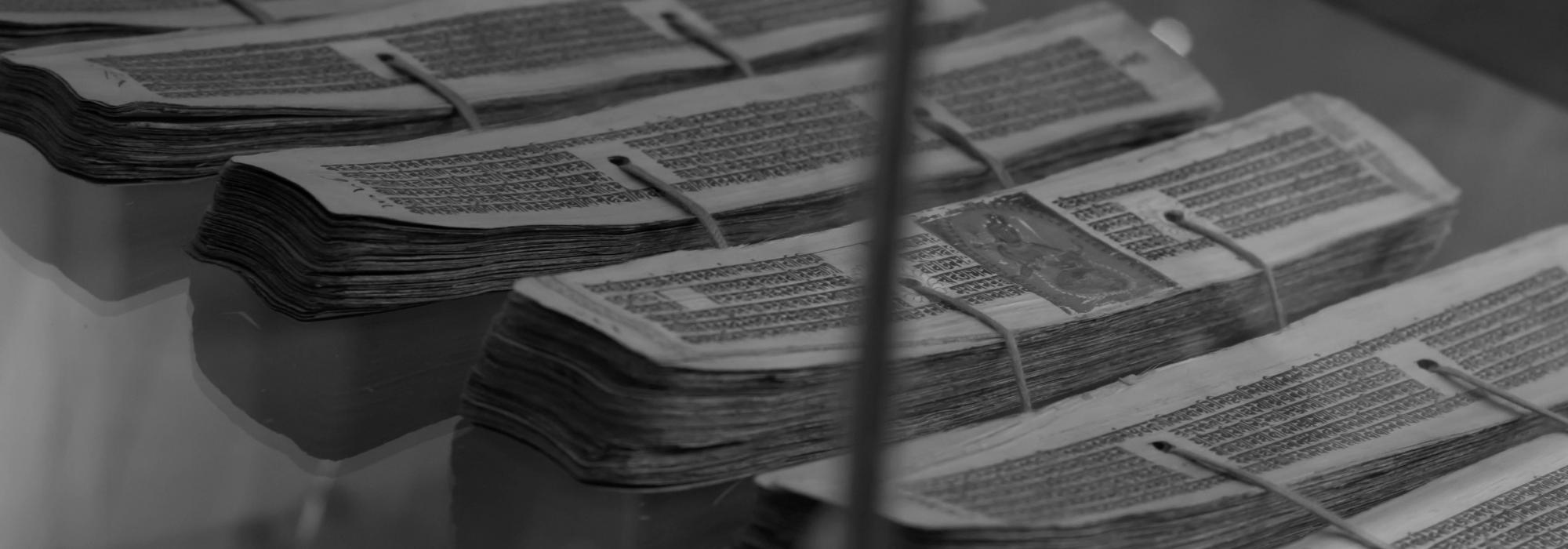We had an overview of Bharata Muni’s Naatyashaastra in the previous article. We picked only one shloka from the 6000 that Bharata has written and analyzed its meaning. We have seen that just like all other art forms, dance too is governed by techniques as laid down by the shaastra. We also discussed the advantage of relying on shaastra and on classical heritage.
[contextly_sidebar id="GATH9jaNSqdcTVbkcwVfxnQ2lL5IfCUY"]
Shaastra is like the canvas on which a work of art is painted. However, the art draws our attention and the canvas lies unseen. Art cannot exist without the canvas, but the canvas does not take predominance over the painting. Shaastra is such a canvas on which dance or any other art form can be ‘painted’. It stands as a backbone to all art forms.
Let us now see what a talented artist can achieve with his roots in the shaastra. In fact, there is nothing impossible for a person who has great creative talent and has a thorough understanding of shaastra. However, we will need to elaborate this aspect as bit, mainly for the sake of people who consider themselves talented and who show contempt for ‘old’ shaastras.
To break out from the pattern that today’s dance is typically following, one can include rasas such as vaatsalya (affection for a younger one), haasya (comedy) and dheera. ‘Dheera’ is a new rasa that I have defined. Today’s dance seems to employ mainly shringaara, a bit of raudra and bhakti, that is overpowered by karuna. Vaatsalya is a rasa that is not necessarily restricted to the affection that Yashoda has for Krishna, but can be explored in greater detail under different themes too. Haasya is prominently seen in modern presentations such as ‘Mime’, which is a by-product of Bharata Muni’s treatise. It is painful to note the ‘progress’ that Yakshagaana has made today – disgust (jugupsaa) has not got elevated to be the ‘bheebhatsa’ rasa and haasya has lost its auchitya (propriety)
Today’s classical dance forms do not make use of Karanas and its building blocks – sthaanka-nrttahasta-chaari and have poor aangikaabhinaya. (The research carried out by Dr. Padma Subrahmanyam is noteworthy in this regard. Her creative application of the revived techniques and the peaks she has scaled with it are worth emulating). One can create new angahaaras, mandalas and pindi-bandhas using the movement vocabulary of the Naatyashaastra. Karanaamshas (parts of Karanas) can also be employed. One needs to study the shaastra to be able to develop these skills. Moreover, an artist needs to have a sensitive mind and gentleness to be able adapt Loka-dharmi by observing the world that is rapidly changing from day to day. Bharata tells us several ways in which Loka-dharmi can be developed. Shaastra gives a lot of scope for interpretation for existing nrrta-hastas and abhinaya-hastas and even to invent new ones to suit modern day needs. Many animal gaits have been described in our ancient texts. However, to portray modern vehicles and equipments through dance, there is a need to develop new Naatya-dharmi. We cannot develop new techniques by breaking away from the classical heritage, but can do so only by adherence to shaastra and heritage. Such an adherence is essential even for stage preparation and preparation of costumes and ornaments.
When different themes are to be presented at a time, one must take a lot of caution in adapting foreign themes and vocabulary. Only a sensitive mind, well rooted in the shaastras will be able to achieve this balance without losing classicality. This is also important in composing music for theater productions and managing stage properties, including electrical lighting and back stage arrangements. Several dance forms are losing out on their classicality, as artists lack awareness about these aspects.
Indian classical dance which was primarily a solo presentation in the medieval times, has started taking to group presentations today. However, both solo and group productions use the same kind of script, music, stage and costumes indiscriminately. Such blind adaptation of the same elements for both kinds of presentation is because many artists today lack the knowledge of shaastra. The working principles for solo and group productions are different from each other. People who know the fundamental difference between nrtta, nrtya and naatya do not do such mistakes. Nrtya-roopakas that are being produced in India today, which try to imitate the western ballet style are poor in their composition and do not evoke rasa. Moreover, several of these are staged to pull crowds and to appease the government, and they employ cheap gimmicks that are not classical but are vulgar and lack suggestion. Such performances are often claimed to be ‘modern’ or ‘folk adaptations’ or ‘abstract art’ to convey a ‘message’ to the society for its ‘refinement’. The hard reality is that all such shows lack classicality, do not evoke rasa and ‘artists’ who do such shows, lack an understanding of shaastras and heritage. It is needless to say that they do not have a sensible and sensitive mind. Many famous artists today are cheating connoisseurs in this way. Extreme vulgar and contemporary elements do not gel well with classical dance. All themes cannot be adapted to the dance medium. All kinds of music and lyrics do not go well with dance. Most ‘Sadir’ dancers today (popular as ‘Bharatanatyam’) do not have this basic understanding and they use every composition of Tyagaraja, Muttuswami Dikshita and Purandara Dasa that catches their attention. By doing so, they not only murder the art form, but also the compositions they have chosen. Most dancers seem to have forgotten that special kind of lyrics and music are required for solo, duet and group performances. The majority of dancers and actors do not seem to know how to universalize contemporary themes that they pick and how to tackle obstacles that rasa faces. It looks as though today’s ‘artists’ have no clue about rasas.














































